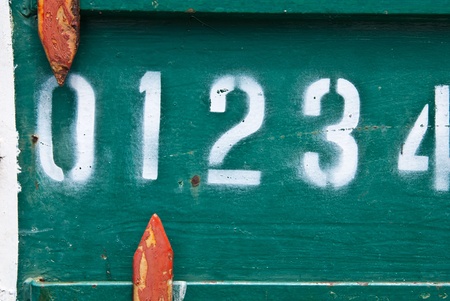Roots of Tarot: Arrival and Early Fascination in Britain
The story of tarot’s arrival in the UK is as mysterious as the cards themselves. Originating in continental Europe during the Renaissance, tarot decks first crossed over to British shores in the late 18th and early 19th centuries. While initially regarded as curious imports, these evocative cards soon piqued the interest of a society enthralled by all things esoteric. The Victorian and Edwardian eras, with their appetite for spiritualism, secret societies, and mystical exploration, provided fertile ground for tarot to take root. Amongst the British elite—writers, artists, and intellectuals—the allure of deciphering hidden truths and glimpsing into the unknown gave tarot an air of fashionable intrigue. It was not merely a parlour pastime; it became a symbol of sophistication and open-minded curiosity. In drawing rooms from London to Edinburgh, tarot readings began to blend seamlessly with other imported continental fads, setting the stage for its enduring place in British culture.
2. The Occult Revival: Tarot’s Role in British Esotericism
The late 19th and early 20th centuries saw a remarkable surge of interest in occultism across Britain, a movement often referred to as the “Occult Revival.” During this period, tarot cards underwent a significant transformation—from mere curiosities or fortune-telling props to powerful symbols woven deeply into the fabric of British esoteric traditions. This shift was largely driven by secretive societies and enigmatic figures who sought to unlock the spiritual and mystical potential of tarot.
The Golden Dawn: Pioneers of Tarot Symbolism
No discussion of tarot’s integration with British occultism would be complete without highlighting the Hermetic Order of the Golden Dawn. Founded in London in 1888, the Golden Dawn placed unprecedented emphasis on the tarot as a tool for spiritual enlightenment, self-discovery, and ritual magick. Members were encouraged to study tarot not merely as a means of divination, but as a visual map of esoteric wisdom—each card embodying rich layers of symbolism drawn from Kabbalah, astrology, alchemy, and classical myth.
Key Figures and Their Contributions
| Figure | Contribution to Tarot | Influence on British Esotericism |
|---|---|---|
| A.E. Waite | Co-created the Rider-Waite-Smith deck; wrote extensively on tarot symbolism | Brought tarot to mainstream British audiences; emphasised spiritual interpretation over fortune-telling |
| Pamela Colman Smith | Illustrated the iconic Rider-Waite-Smith deck under Waite’s guidance | Her artwork made tarot more accessible and visually engaging in Britain |
| Aleister Crowley | Created the Thoth Tarot with artist Lady Frieda Harris; integrated Thelemic philosophy into tarot structure | Pushed boundaries of traditional tarot; fostered new currents in modern British occultism |
| MacGregor Mathers | Golden Dawn co-founder; developed intricate correspondences between tarot, Hebrew letters, and astrology | Shaped ceremonial use of tarot within British esoteric societies |
The Transformation: From Parlor Game to Spiritual Compass
This era marked a pivotal evolution for tarot within the UK. Once relegated to parlour entertainment or viewed with suspicion by Victorian society, tarot became a key that unlocked deeper realms of consciousness for many Britons seeking meaning beyond material reality. Through complex rituals, detailed study, and creative reinterpretation by leading occultists, tarot was firmly established as both an initiatory tool and an enduring symbol within British spiritual culture—a legacy still evident in contemporary practices today.
![]()
3. Cultural Imprints: Tarot in British Art, Literature, and Media
The British cultural landscape has long embraced the mystical allure of tarot, weaving its symbolism into the very fabric of art, literature, and media. From the early twentieth-century salons of the Bloomsbury Group—where Virginia Woolf and her contemporaries delighted in esoteric references—to the surrealist explorations of artists like Leonora Carrington, tarot cards became more than fortune-telling tools; they evolved into potent metaphors for human psychology, fate, and creativity.
Tarot in Literature: From Modernism to Magical Realism
British authors have frequently drawn upon tarot’s rich imagery to deepen their narratives. T.S. Eliot’s “The Waste Land” famously alludes to Madame Sosostris, a clairvoyant dealing out tarot cards as omens of post-war uncertainty. Decades later, Angela Carter’s novels would blend folklore with tarot symbolism, using archetypes like The Empress or The Fool to explore gender and power dynamics within fantastical realms. Such literary works highlight how tarot served as both a lens for social commentary and an emblem of personal transformation.
Visual Arts: Tarot’s Surreal Aesthetic
In the visual arts, British painters and illustrators from the Pre-Raphaelites to post-war pop artists embraced tarot’s visual drama. Pamela Colman Smith, co-creator of the iconic Rider-Waite-Smith deck in 1909, brought her theatrical flair from stage design into her card illustrations—a legacy still revered by artists today. Later, David Hockney and other modernists would riff on tarot’s bold archetypes, reimagining them through the prism of contemporary anxieties and aspirations.
On Screen: Tarot in British Film and Television
Tarot has also found its way onto British screens—from Hammer Horror films invoking gothic mystique to more recent series like “Doctor Who,” where tarot occasionally appears as a cipher for destiny and choice. These cinematic moments often use tarot not just as plot devices but as reflections of society’s ongoing fascination with mystery, fate, and self-discovery.
In short, British creators across generations have tapped into tarot’s evocative power to shape stories that resonate with themes of uncertainty, possibility, and transformation—mirroring the UK’s own evolving relationship with magic and meaning.
4. From Parlour Games to Personal Insight: Tarot in 20th Century Britain
The story of tarot in 20th-century Britain is a fascinating journey, marked by an evolution from drawing-room entertainment to a respected tool for self-understanding. As Victorian spiritualism waned and the British public grew increasingly secular, tarot’s image began to shift. Where once the cards might have been laid out as part of an evening’s amusements—often more to provoke laughter than revelation—the 20th century saw tarot taking on deeper, more introspective roles.
Changing Attitudes: From Mysticism to Modernity
During the early decades, tarot still carried an air of mystery, associated with secret societies like the Hermetic Order of the Golden Dawn. Yet, as Britain faced two world wars and rapid social change, many sought meaning beyond traditional religion. Psychological theories—especially those of Carl Jung—gained popularity, encouraging people to explore their inner worlds. Tarot found new footing here, embraced not just by occultists but also by those seeking personal growth and guidance.
Tarot’s Dual Identity: Entertainment vs. Insight
| Aspect | Early 20th Century | Late 20th Century |
|---|---|---|
| Main Use | Parlour game, novelty act | Tool for reflection, therapy adjunct |
| Public Perception | Mystical, slightly disreputable | Increasingly mainstream and self-development focused |
| Practitioners | Amateurs, stage magicians | Counsellors, therapists, everyday individuals |
| Cultural Framing | Linked to fortune-telling and superstition | Tied to psychology and personal empowerment |
The British Context: Pragmatism Meets Spiritual Curiosity
British culture has always balanced scepticism with a quiet fascination for the mysterious—a “believe it if you like” attitude that shaped tarot’s local narrative. By the late 20th century, tarot was no longer confined to candlelit séances or seaside piers; instead, it appeared in bookshops across London and Manchester, was discussed in popular magazines such as Cosmopolitan UK, and even referenced in mainstream television dramas. This era witnessed tarot readers reframing their craft—not as fortune-tellers but as facilitators of self-discovery, making the cards relevant to anyone curious about their own story.
5. Contemporary Perspectives: Tarot as Modern Guidance
In the UK today, tarot has shed much of its old mystique and occult overtones, finding a fresh identity in the hands of a new generation. Far from being hidden away in dimly lit back rooms, tarot decks are now just as likely to be found in bustling bookshops or featured in mindfulness workshops across Britain’s cities and market towns alike. This transformation mirrors wider shifts towards personal wellbeing and an increasingly inclusive approach to spirituality.
Tarot for Mindfulness and Reflection
Modern Britons often turn to tarot not as fortune-telling, but as a tool for self-reflection and mindfulness. Drawing a daily card has become part of many people’s morning routine—akin to journaling or meditation. The cards offer prompts that encourage users to pause, breathe, and contemplate their own lives, reinforcing the growing British appetite for practices that support mental health and resilience.
Spiritual Guidance Without Boundaries
The UK’s rich tapestry of faiths and philosophies is reflected in how tarot is used today. It is not uncommon for people from diverse backgrounds—Christian, pagan, agnostic, or otherwise—to consult the cards for spiritual insight. Tarot circles and meetups across Britain provide a welcoming space where individuals can explore life’s big questions without dogma or hierarchy, echoing broader cultural moves towards open-minded and pluralistic spirituality.
Creative Inspiration and Storytelling
Beyond introspection, tarot also fuels creativity among British artists, writers, and performers. The symbolism of the cards offers endless inspiration for character development, narrative arcs, and artistic expression. From novelists in Edinburgh drawing plot twists from the Major Arcana, to London-based illustrators reimagining classic decks with contemporary flair, tarot’s visual language resonates deeply within the UK’s creative communities.
Altogether, tarot’s journey from secretive parlour practice to mainstream mindfulness tool highlights the UK’s embrace of holistic wellbeing and diverse spiritual exploration. As British society continues to evolve, so too does its relationship with the cards—blending tradition with innovation in uniquely local ways.
6. British Voices: Stories from Readers and Seekers
The tapestry of tarot in the UK today is woven with threads of personal experience, innovation, and regional identity. Across England, Scotland, Wales, and Northern Ireland, modern tarot practitioners are redefining what it means to seek guidance through the cards—often blending tradition with contemporary values.
Regional Flavours: From Yorkshire Moors to London’s Streets
Tarot readers in the UK often infuse their practice with a sense of place. In rural Cornwall, for example, some practitioners draw upon Celtic folklore and local legends, bringing ancestral wisdom into their readings. Meanwhile, urban tarot collectives in cities like Manchester and London foster inclusive spaces that reflect the diversity of Britain today, welcoming clients from all backgrounds and identities.
Inclusivity at the Heart
The modern British tarot scene is shaped by a strong ethos of inclusivity. Practitioners from LGBTQ+ communities have found tarot to be a supportive tool for self-exploration and empowerment. Many tarot groups now actively strive to dismantle stereotypes and make room for voices that were historically marginalised within spiritual circles. As one reader from Glasgow noted, “Tarot here isn’t about telling your fortune—it’s about helping you understand yourself better, no matter who you are.”
The Digital Revolution: Tarot in the Age of Technology
Technology has transformed how Britons engage with tarot. Online readings via video calls or dedicated apps mean that seekers from remote Scottish islands to bustling Birmingham can connect with readers across the country—or even globally. Social media platforms like Instagram and TikTok have become vibrant hubs for sharing insights, tutorials, and personal stories, enabling a new generation of practitioners to shape tarot’s future in creative ways.
Together, these diverse voices illustrate how tarot’s role in the UK continues to evolve—grounded in local identity yet open to global influences; rooted in tradition yet boldly innovative. Whether drawing cards at a seaside fair or streaming live on social media, British tarot practitioners are charting new pathways for guidance, reflection, and community connection.


